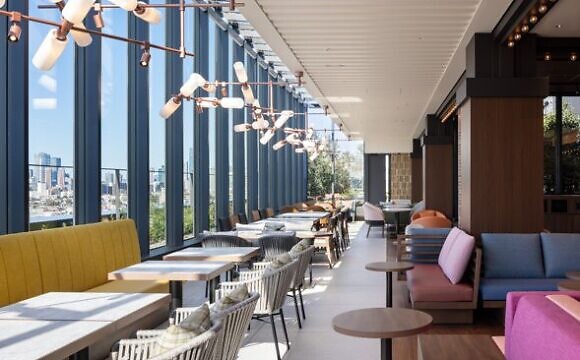The reputation of a Japanese ski resort called Kiroro is starting to snowball.
As travel advisories between Thailand and Japan begin to melt, Thai travellers with cabin fever are ready to chill in Asia’s ultimate winter getaway: the snow-shawled mountains of Hokkaido. Many of these hardy Thais are bound for Kiroro. On the up and up as a skiing and snowboarding destination, the resort poses some serious competition to the more well-known and far more crowded Niseko. Devotees of this reasonably new destination are enamoured of the powdery snow that is not too hard on beginners’ butts and pride, the five-month-long ski season and the town’s proximity to the airport of Sapporo.
These charms were not lost on Saranyu “Jed" Adhyanasakul, the director of International Business Development for the Thai firm Property Perfect. In 2012, he chanced upon this alpine hinterland on a snowboarding trip to Hokkaido.
The destination offered a number of incentives to Thai visitors such as free visa exemptions and direct flights from Thailand. But shrewd business moves depend as much on foresight as logistics. Jed saw another trend gaining momentum: “skiing is getting popular in Asia," he said.
What’s developed over the past seven years, courtesy of Property Perfect is a nexus for skiers called Kiroro. The all-in-one complex encompasses three hotels: The Kiroro, a Tribute Portfolio hotel, Sheraton Hokkaido Kiroro Resort and, most opulent of all, the Yu Kiroro. The latter also boasts condos, and stunningly beautiful penthouses, for winter and summer vacationers, who relish the mountain-high life. The ski-to-door private residences are fully-furnished and were designed by Ohkawa Yuichiro, the interior designer from acclaimed design firm ILYA Corporation.
Integral to the resort’s success and modus operandi is the “ski in, ski out" concept, which means that guests can glide and slalom from their accommodations to the slopes and back again. It’s the kind of feature that serious skiers love, and the Yu Kiroro the only luxury condo hotel in Japan to offer this concept.
Off the slopes, skiers love to party and indulge in some fine wine and dining. The property owners cater to these hedonists. Beefing up the F&B outlets is an ongoing priority. At the moment, there are 22 outlets, ranging from fine dining to local cuisine and just about everything in between. For foodies who like local specialties, the scallops, melon and Japanese sweets provide nibbles of Hokkaido culture. Wash them down with some drinks at the igloo-shaped Ice Bar, which is a centrepiece of the après-ski activities.
At the condo hotel, guests can unwind and soothe tired muscles by taking a dip in the indoor or outdoor onsen, a uniquely Japanese tradition, which incorporates steaming mineral water and saunas as healing balms.
As the resort’s popularity peaks with visitors from all over Asia, and even the United States and Europe, it occupies a special place in the hearts of Thais. That’s because a romantic comedy called One Day used Kiroro as a snowy set. In particular, the bell at the top of the mountain is shrouded in love and mythology. Believers, like one of the characters in the movie, think that ringing the bell attests to an undying love.
Lest anyone should think that Kiroro is a winter-only resort, Jed reminds us that this is an all-year destination. He lists off some of the summertime activities, like paying a visit to a whiskey distiller, hiking up and around the volcanic Mount Asahi, from whence the name of the beer was derived, or hitting the beach for some sunshine, swimming and snoozing.
“In the summer there’s also a lot to do. It’s a destination rich in nature, good food, fresh air, great seafood and a variety of fruits in the summer season. We work with local businesses and the towns nearby Kiroro to promote the lesser known parts of the area," he said, adding that the summer temperatures are a balmy 23-to-24 degrees Celsius, which is a welcome reprieve from the sticky and sweaty humidity in other parts of the country at that time.
Some visitors morph into day-trippers to visit the quaint port town of Otaru, renowned for its glassware and Japanese sweets. Personally, I found the sweets similar to the molecular cuisine, i.e., chocolates with freeze-dried strawberries, which has become popular in the West.
What it all adds up to is a resort for all seasons, where adventures in the great outdoors, come winter or summer, can be undertaken in tandem with the finest of creature comforts.





















